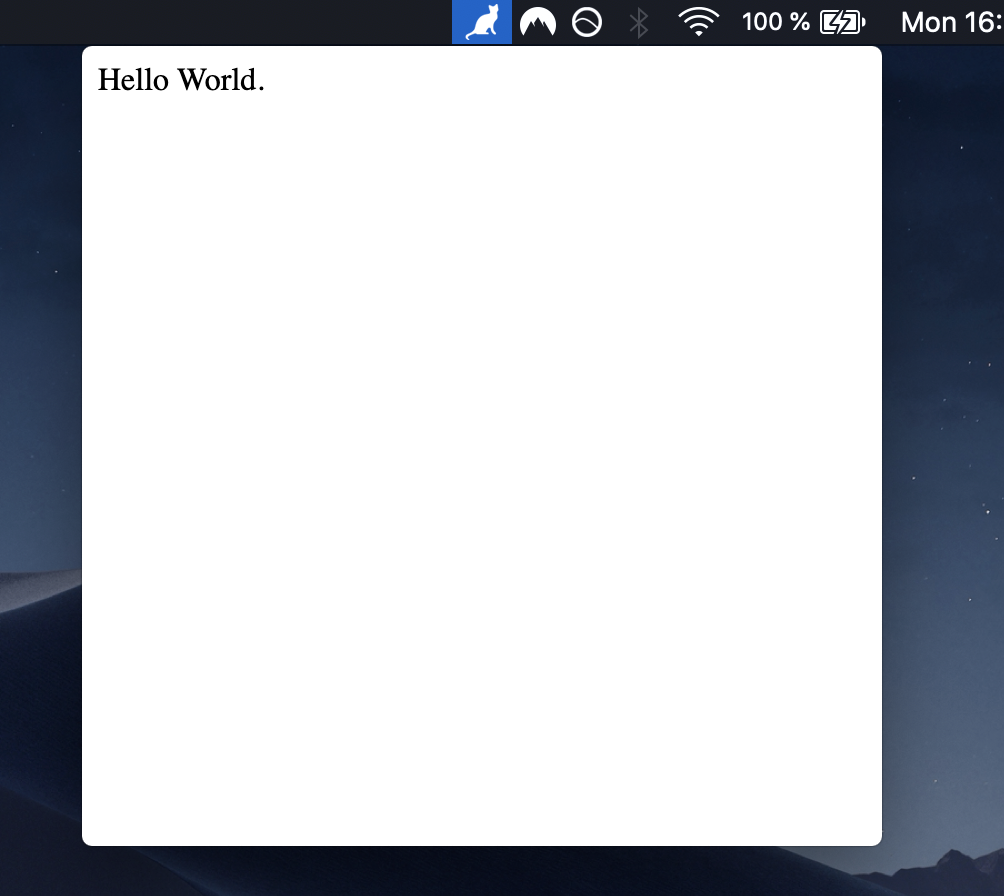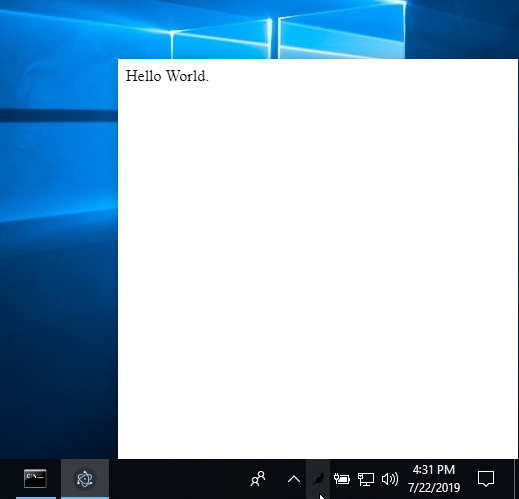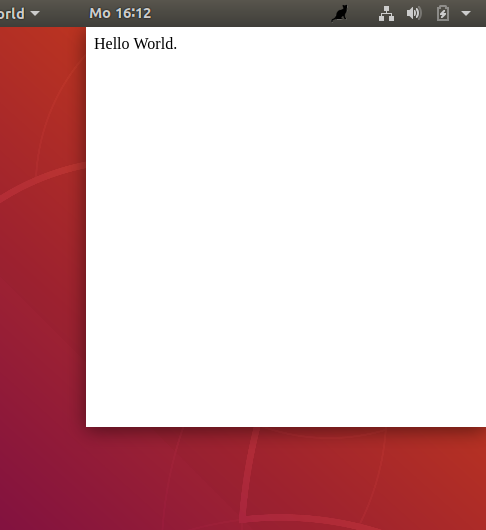This module provides boilerplate for setting up a menubar application using Electron. All you have to do is point it at your index.html and menubar will handle the rest.
✅ Only one dependency, and one peer-dependency.
✅ Works on macOS, Windows and most Linuxes. See details.
✅ 💥 3.6kB minified + gzipped 💥
 |
 |
 |
|---|---|---|
| macOS Mojave 10.14 | Windows 10 | Ubuntu 18.04 |
yarn add menubarStarting with your own new project, run these commands:
$ yarn add menubar
$ touch myApp.js
$ touch index.htmlFill index.html with some HTML, and myApp.js like this:
const { menubar } = require('menubar');
const mb = menubar();
mb.on('ready', () => {
console.log('app is ready');
// your app code here
});Then use electron to run the app:
$ electron myApp.jsAlternatively, see examples/hello-world folder for a simple working example.
The return value of menubar() is a Menubar class instance, which has these properties:
app: the Electron App instance,window: the Electron Browser Window instance,tray: the Electron Tray instance,positioner: the Electron Positioner instance,setOption(option, value): change an option after menubar is created,getOption(option): get an menubar option,showWindow(): show the menubar window,hideWindow(): hide the menubar window
See the reference API docs.
You can pass an optional options object into the menubar({ ... }) function:
dir(defaultprocess.cwd()) - the app source directoryindex(defaultfile:// + opts.dir + index.html) - The URL to load the menubar's browserWindow with. The url can be a remote address (e.g.http://) or a path to a local HTML file using thefile://protocol.browserWindow- BrowserWindow options to be passed to the BrowserWindow constructor, see Electron docs. Some interesting fields to passed down are:x(defaultundefined) - the x position of the windowy(defaultundefined) - the y position of the windowwidth(default 400) - window widthheight(default 400) - window heightalwaysOnTop(default false) - if true, the window will not hide on blur
icon(defaultopts.dir + IconTemplate.png) - the png icon to use for the menubar. A good size to start with is 20x20. To support retina, supply a 2x sized image (e.g. 40x40) with@2xadded to the end of the name, soicon.pngandicon@2x.pngand Electron will automatically use your@2xversion on retina screens.tooltip(default empty) - menubar tray icon tooltip texttray(default created on-the-fly) - an electronTrayinstance. if providedopts.iconwill be ignoredpreloadWindow(default false) - Create BrowserWindow instance before it is used -- increasing resource usage, but making the click on the menubar load faster.loadUrlOptions- (default undefined) The options passed when loading the index URL in the menubar's browserWindow. Everything browserWindow.loadURL supports is supported; this object is simply passed onto browserWindow.loadURLshowOnAllWorkspaces(default true) - Makes the window available on all OS X workspaces.windowPosition(default trayCenter and trayBottomCenter on Windows) - Sets the window position (x and y will still override this), check positioner docs for valid values.showDockIcon(default false) - Configure the visibility of the application dock icon.showOnRightClick(default false) - Show the window on 'right-click' event instead of regular 'click'
See the reference API docs.
The Menubar class is an event emitter:
ready- whenmenubar's tray icon has been created and initialized, i.e. whenmenubaris ready to be used. Note: this is different than Electron app'sreadyevent, which happens much earlier in the processcreate-window- the line beforenew BrowserWindow()is calledbefore-load- after create window, before loadUrl (can be used forrequire("@electron/remote/main").enable(webContents))after-create-window- the line after all window init code is done and url was loadedshow- the line beforewindow.show()is calledafter-show- the line afterwindow.show()is calledhide- the line beforewindow.hide()is called (on window blur)after-hide- the line afterwindow.hide()is calledafter-close- after the.window(BrowserWindow) property has been deletedfocus-lost- emitted if always-on-top option is set and the user clicks away
| menubar | Electron | Notes |
|---|---|---|
| 9.x.x | 9.x.x | 10.x.x | 11.x.x | 12.x.x | 13.x.x | 14.x.x | 15.x.x | 16.x.x | 17.x.x | 18.x.x | 19.x. | 20.x. | 21.x.x | 22.x.x | 23.x.x. | 24.x.x. | 25.x.x. | 26.x.x. | 27.x.x. | |
| 8.x.x | 8.x.x | |
| 7.x.x | 7.x.x | |
| 6.x.x | 4.x.x | 5.x.x | 6.x.x | Not recommended for security reasons |
| <= 5.x.x | <= 3.x.x | Please, please don't use these old versions |
See the reference API docs.
- Use
mb.on('after-create-window', callback)to run things after your app has loaded. For example you could runmb.window.openDevTools()to open the developer tools for debugging, or load a different URL withmb.window.loadURL() - Use
mb.on('focus-lost')if you would like to perform some operation when using the optionbrowserWindow.alwaysOnTop: true - To restore focus of previous window after menubar hide, use
mb.on('after-hide', () => { mb.app.hide() } )or similar - To create a native menu, you can use
tray.setContextMenu(contextMenu), and pass this custom tray to menubar:const mb = menubar({ tray });. See this example for more information. - To avoid a flash when opening your menubar app, you can disable backgrounding the app using the following:
mb.app.commandLine.appendSwitch('disable-backgrounding-occluded-windows', 'true');


